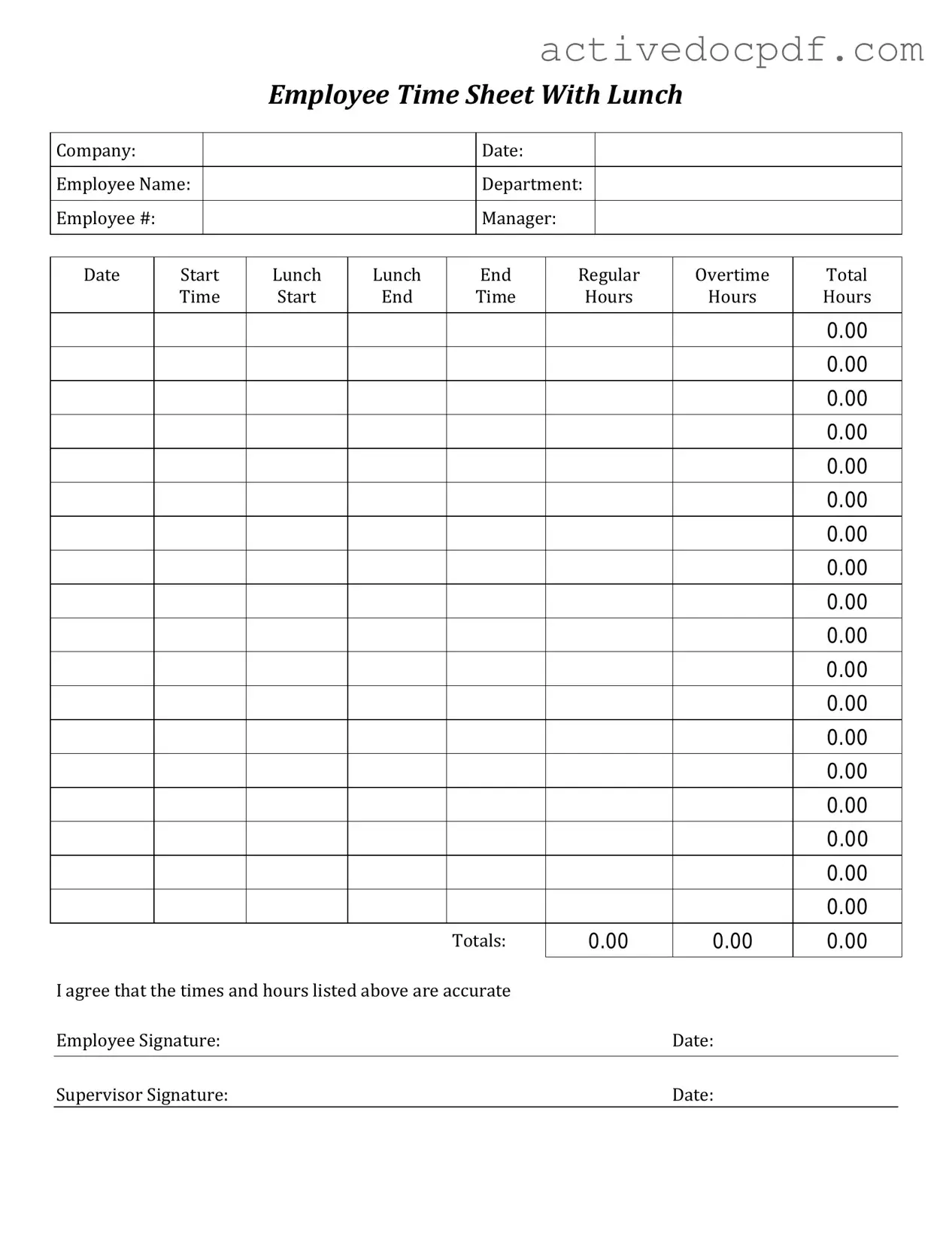Free Time Card PDF Form
A Time Card form is a document used by employees to record the hours they work during a specific pay period. This form helps ensure accurate tracking of time worked, which is essential for payroll processing. Proper completion of the Time Card form contributes to timely and correct compensation for employees.
Edit Form Online
